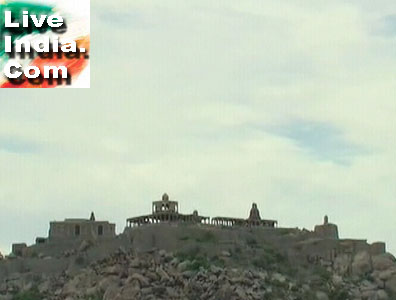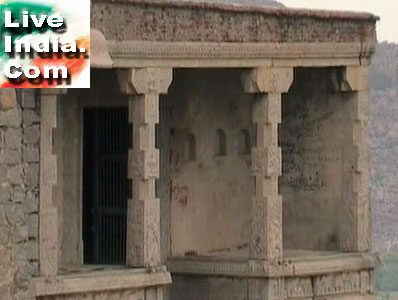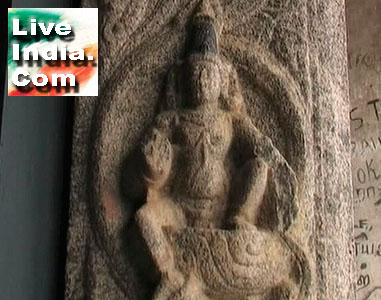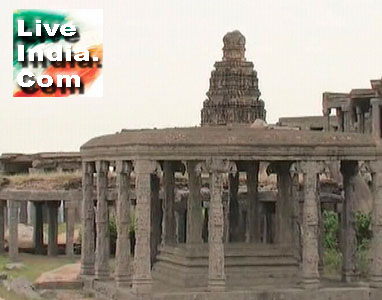| Ranga
Natha Swami Temple
On the Rajagiri hill are
two granaries with vaulted chambers, a magazine, the flag - staff, the
audience hall and the treasury in the Indo - Islamic Style.The Ranganatha
Temple here belongs to the Vijayanagara Period. A big canon in front of
the mandapa of this temple adds merit to the strategic position of the
fort. The shrine of goddess Kamalakanni Amman lies on the way up the hill.
This has resulted in a
harmonious combination of different defense techniques followed over a
period of nearly four centuries.
According to tradition
the name Gingee or Senji is derived from Senji Amman, a virgin goddess.
The origional Fort at Rajagiri was founded by Ananda Kon I, the Chief of
Konar community in A.D. 1220 and the Krishnagiri was fortified by his successor
Krishna Kon around A.D. 1240. Other buildings and structures were raised
by the successive rulers of Gingee belonging to the Vijayanagara, Nayaka,
Maratha, Mughal, Carnatic, Nawab, the French and British during the period
A.D. 1383 to 1780.
Near the western gate
of the Inner Fort is the Venugopalaswami Temple. Besides granary. Gymnasium,
barracks, royal harem, mosque of Mahabut Khan, the Kalyana Mahal is the
most impressive multi storeyed building with the pyramidal roof. The vaulted
structures, rectangular on plan with thick walls and large semicircular
vaults preserved the stored grain in a dry condition.
Considerable skill was
exhibited in water management and storage. Water was accumulated from the
weathered granite through an underground drainage protection it from evaporation
and finally getting collected in the innumerable natural reservoirs.
The Vijayanagara Emperor,
Krishnadeva Raya posted Krishnappa Nayaka as his Viceroy who later become
the founder of Nayaka line of Gingee. Gingee was plundered and looted by
the Muslims of Bijapur by 1674 and this was a deadly blow to the sprawling
capital city. |









